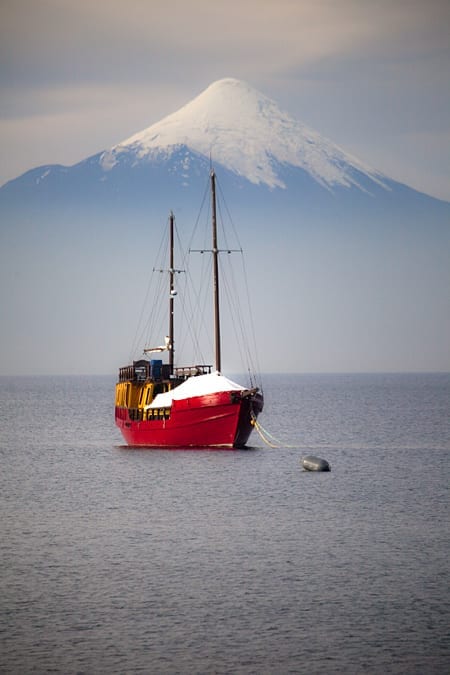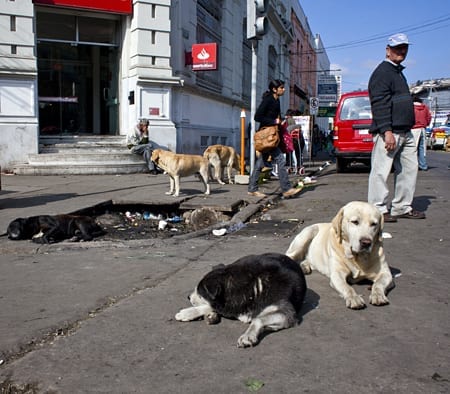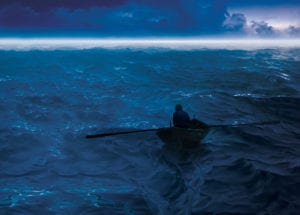By Daniel de la Calle
You can fool and distract yourself in the days leading to a trip, go through the motions of packing, closing doors and taking cabs in hypnotic discipline, behave in such a drowsy way during the flight that the experience nears teletransportation, but when the captain’s voice comes in the speaker commanding everyone to buckle up in preparation for crossing the Andes you immediately wake up with the strength of a pound of caffeine and Chile surfaces in your mind, solid and unequivocal.
I had never buckled up to go over mountains. But then again, these were the Andes, daisy chaining in time everything from the Incas to “Alive: The Story of the Andes Survivors“and encompassing in space over 7,000 kilometers of mountains, high plateaus and volcanoes; the true backbone of the South American continent. Sure, the Himalayas are the Himalayas, with all the 7000 and 8000 meter summits in the world, but when it comes to names nothing resonates higher or sounds steeper than the Andes.
The Chile I saw and walked on below was at times not what I expected. Downtown Santiago could be in Madrid or even Paris and Southern Chile is at times a slightly poorer and much wilder mirror image of Germany and Switzerland. City streets nationwide are taken by literally thousands of stray dogs. They are so many and so large only after some time you come to accept none of them lives in a home. Maybe as consequence, there are very few dog owners.  Any city street corner in Chile
Any city street corner in Chile
But reaching closer to our documentary and its subject, when looking at a map one would think that Chile and Chileans face the Pacific Ocean for over 4,500 kilometers of straight coastline, but the truth is that the country has its back to it and what they face are the wine valleys, fruit farms and mineral-rich soil before and into the striking Andean peaks. Sure, you will find in its waters some of the best fishing grounds in the world, and they are the second producers of salmon worldwide, but culturally, historically, gastronomically and economically the Pacific is mostly ignored and taken as a frontier. After arriving in Puerto Montt for our three scheduled screenings at the Diego Rivera theater I walked into a 30 aisle supermarket and found a plethora of kuchen and wurst, many of the smells from my Bavarian grandmother’s kitchen, Argentinian veal steaks (some fed with Chilean fish meal!), but no fish section at all. Nothing, not even salmon. Ten steps away from waters filled with barnacles the size of your fist, “shoe mussels” (deservedly called so by locals) and fish farms that export worldwide, buying any of it fresh was not an option.
The two school screenings went very well, drawing kids from towns within a two hour radius. Some had to even cross lakes on ferry boats to get to the theater those two mornings. The students from a Puerto Varas school, a beautiful town sitting at the foot of lake Llanquihue, had been doing these past few months some lab experiments on Ocean Acidification, so they were the most knowledgeable and interested (measured by the number of questions raised at least) of all. These events with students are not just about the specific problem of acidification, they are about nature, preservation, the environment, the threats to life and about having that become part of the school curriculum. Living in such beautiful, almost unspoiled surroundings I felt I had to explain that in fact most of the world does not look that way and is not in such condition, that no matter how accustomed they might be they should not take any of it for granted. They are very fortunate to wake up every morning with wilderness at the doorstep, surrounded by clean water, fertile land, and glacier mountains tops. Idyllic, and it is very good to hear a foreigner praise and envy it. The youngest kids walking into the Diego Rivera Theater
The youngest kids walking into the Diego Rivera Theater
The evening screening for adults usually shows where there is friction in the region, the cracks on the wall that go unnoticed to the mere visitor, so I am very lucky because this way of traveling puts me in a very privileged position. In the case of Puerto Montt the not so sunny side was primarily the environmental damage caused by the salmon industry. There is a long, repeated history of pollution and abuse by salmon farms in the area, and also much resentment because the economic benefits have not stayed in the area either. And the fishing fleet had not done things any better. It seems to have historically been in the hands of Spanish and Japanese companies with little scruples and immense greed (those two, always going hand in hand). Since I am a Spaniard, a local fisherman and a young historian both spoke about the atrocities my ancestors had done since the XVI Century and about the ones my fellow countrymen are still doing, obliterating the ocean bottoms, trawler fishing the waters empty. It is hard to know what to say in these cases, when one becomes a forced representative of his country of origin or of the first world in general and I am told I have no right to defend preservation, to deprive their country’s economy of developing and preach the opposite of what my nation has done and still does. No matter how much I despise flag waving and tribal chest pounding, it is not hard to also see how it can itch to have an “outsider” deliver certain messages, so my hope, I guess, is that soon the young audience from the morning screenings will be the one speaking and demanding changes everywhere. Also in beautiful Southern Chile.
 View from Puerto Varas of Lake Llanquihue and the Osorno Volcano
View from Puerto Varas of Lake Llanquihue and the Osorno Volcano


